The Archaeological Museum of Samothraki is in Palaiopoli, right next to the Sanctuary of the Great Gods. The small building was erected by the American School of Classical Studies of Athens between 1939 and 1955. Its architect was Stuart M. Shaw from the Metropolitan Museum of New York. A new wing was added in 1960-1961, under the supervision of the same architect.

To get to the museum follow the path to the Sanctuary. It starts in the parking lot by the church of Agia Paraskevi in Paleopoli. The museum is right before the entrance to the archeological site and is open for visitation daily from 8:30 to 15:30. It reopened in July 2024 after a long restoration, but it was worth the wait. It was transformed into a modern and interesting museum and I recommend visiting it first before exploring the Sanctuary of the Great Gods - it will help you better understand the history of the island.
There's a single ticket for the Archeological Museum ((+30) 255 104 1474) and the Sanctuary of the Great Gods which can be purchased for 6 € from the booth on the right of the building. Pets are not allowed.

In the autumn of 2021, a copy of the statue of Niki of Samothraki was placed in front of the museum. The original is at the Louvre. The statue has the same size and was carved out of Thassos marble by a machine using the model supplied by the Louvre Museum.

The Archeological Museum of Paleopoli consists of 5 rooms and is financed by the Greek state. Most exhibits are discoveries made during the digs of The American School of Archeology, and the rest are random findings by the inhabitants or donations by the scholar Nikolaos Fardys, born in Chora.
On the exterior wall, to the right of the entrance, there's a plaque dedicated to the memory of Karl Lehmann, who was, for a long time, the coordinator of the archeological research in Paleopoli.
Room A
Room A contains fragments and partial reconstructions of three of the most important buildings of the Sanctuary of the Great Gods: Hieron (in which the second stage of the initiation took place), the Altar Court and the Rotonda of Arsinoe. They have common features, a fact especially visible in the entablement.

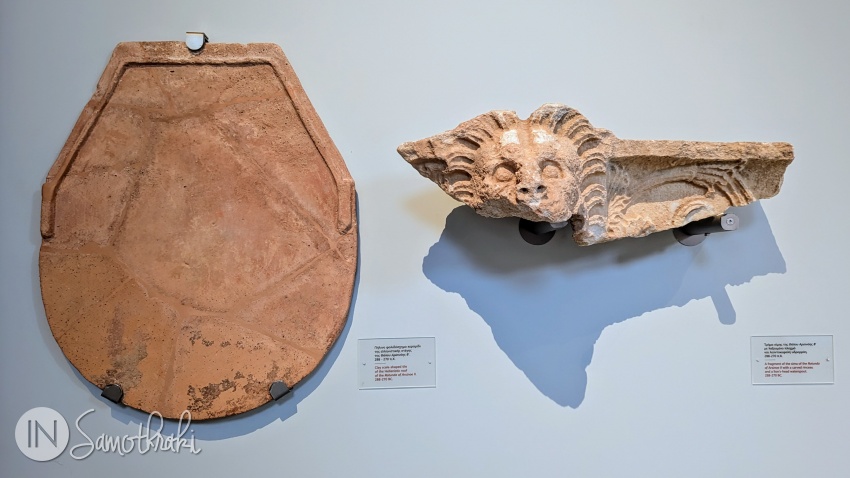
One of the four life-size statues of the goddess Niki is on display in the museum, while another is in Vienna. The statues were made out of Thassos marble and decorated the upper corners of the Hieron.
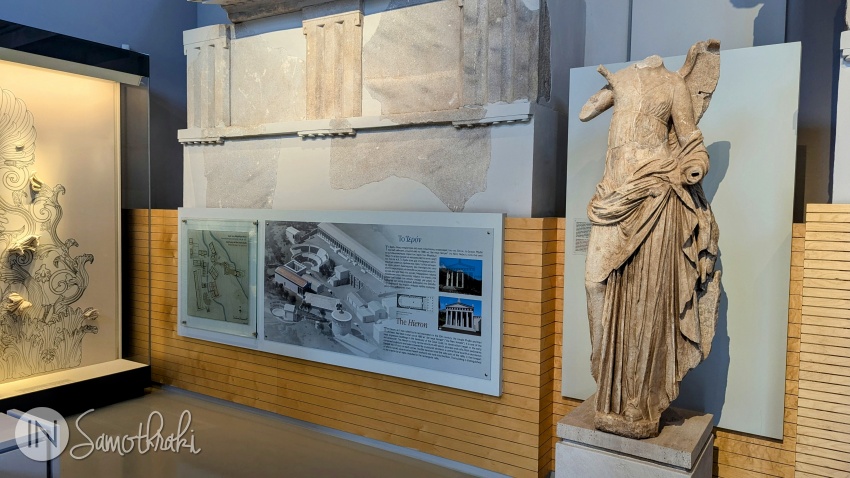
In the middle of the room, there's a mock-up of the sanctuary. The panels on the walls tell the story of the main events in the island's history in chronological order, as well as the story of the archeological research in Samothraki.
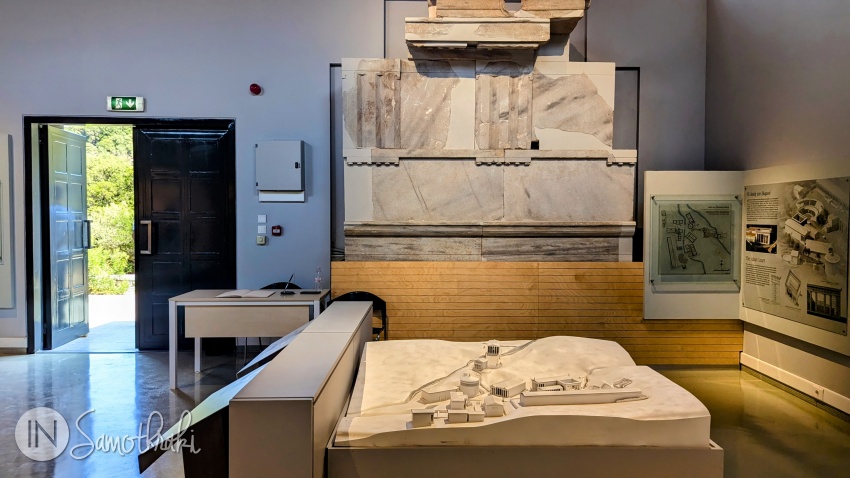

Room B
This room is dedicated to the sadly under-explored Ancient City. Most objects come from the necropolises, especially the southern one. This was the longest-used cemetery and it seems that it was reserved for the priests, the administrators of the sanctuary and their families. The graves that were uncovered span over 8 centuries, starting from the 6th century B.C. and ending in the 2nd century A.C.
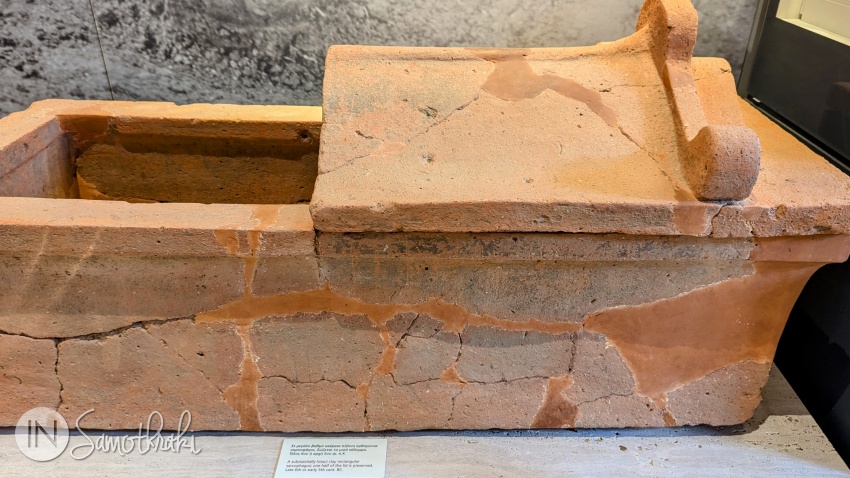
The display cases contain glass and ceramic recipients, objects made of bone, iron and bronze, statues, silver and gold jewelry and a coin collection from Samothraki and other places.
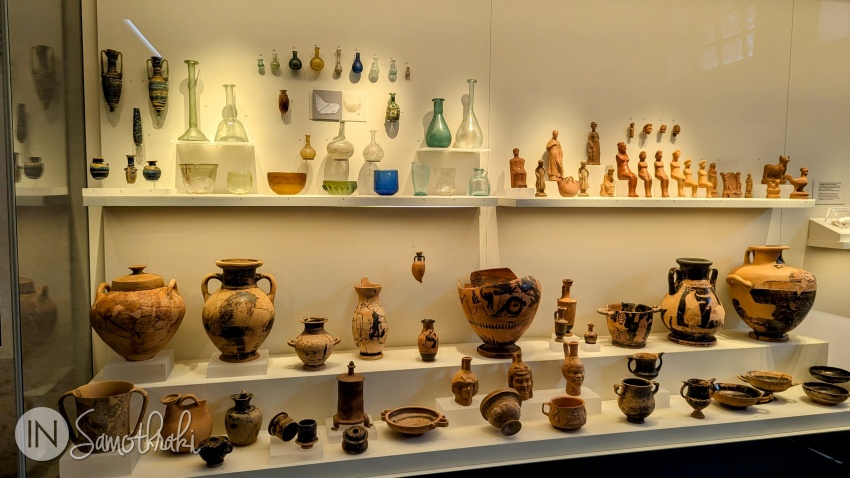
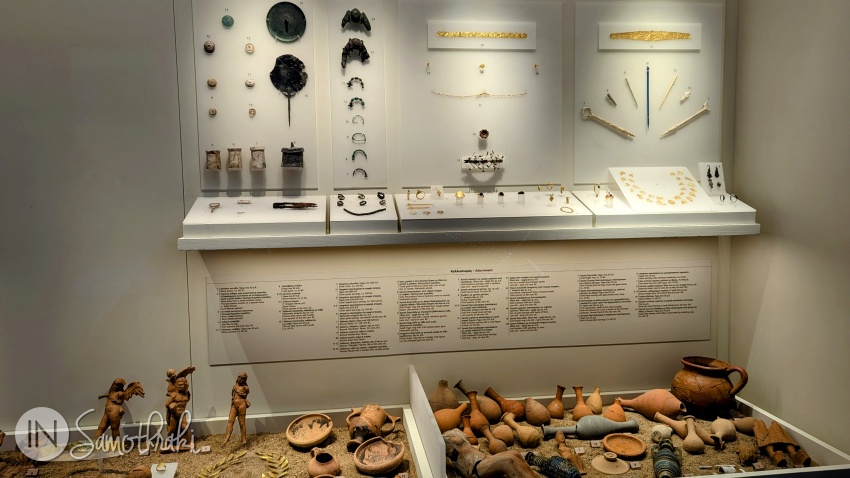
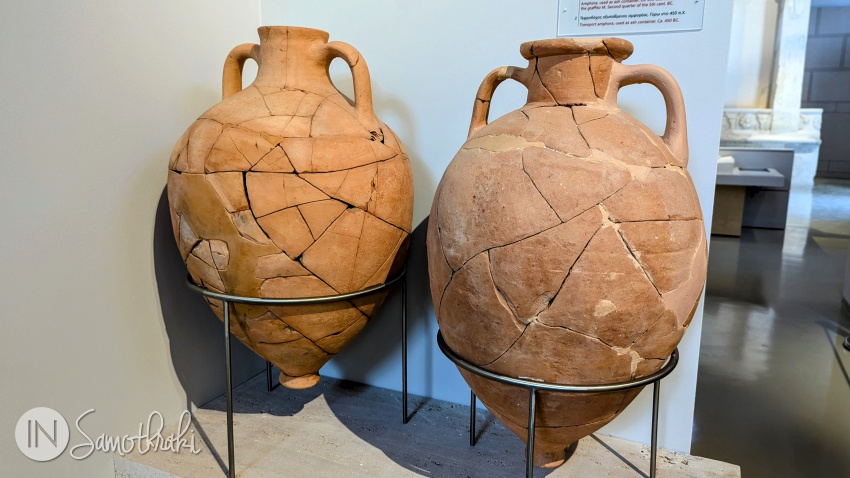
Room C
Room C is called "Entrance to the Sanctuary" and offers an image of the buildings where the rituals preliminary to the initiation took place. The first of these was Ptolemy's Propylaea, the gate to the sanctuary that was connected to the ancient city by the Sacred Road. Another building is the Theatral Circle (or Sacred Circle) where the preparation ceremonies happened. The last building, the monument of Filip III and Alexander IV which bears a visible votive inscription, was dedicated to the Great Gods by Alexander the Great's descendants: his stepbrother and his son, born after his death.
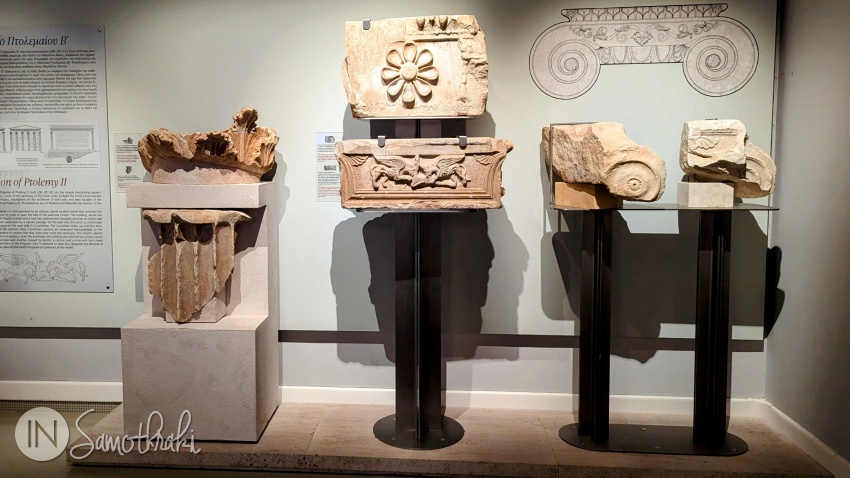
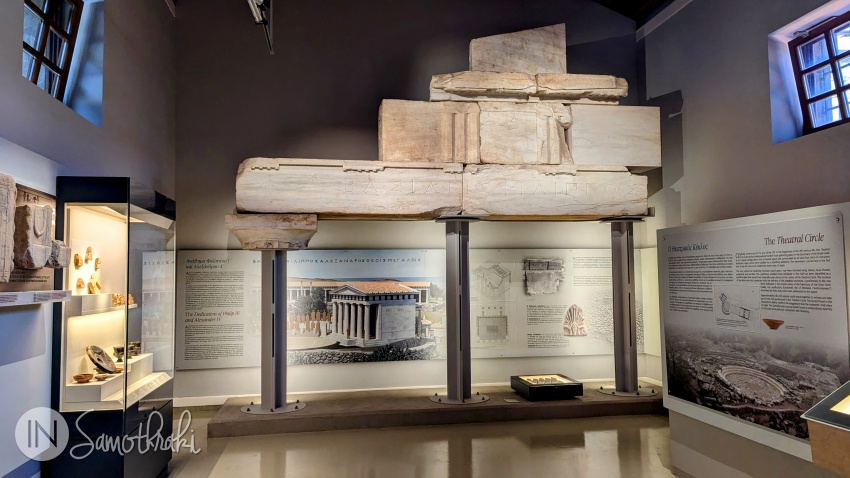
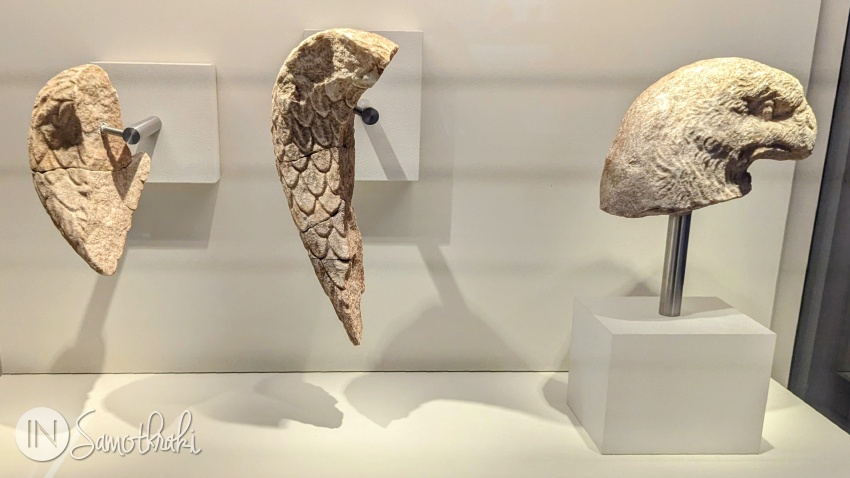
The inner courtyard
A beautiful courtyard connects rooms C and D. 32 engravings from the sanctuary are on display here. Most of them are fragments from the lists of the so-called "initiated", people that went through with the rituals. The other are decrees, votive inscriptions and funeral inscriptions.
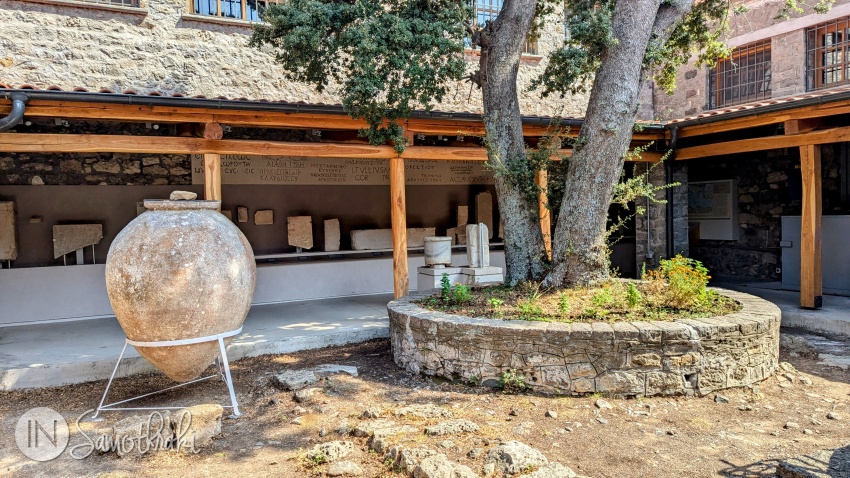
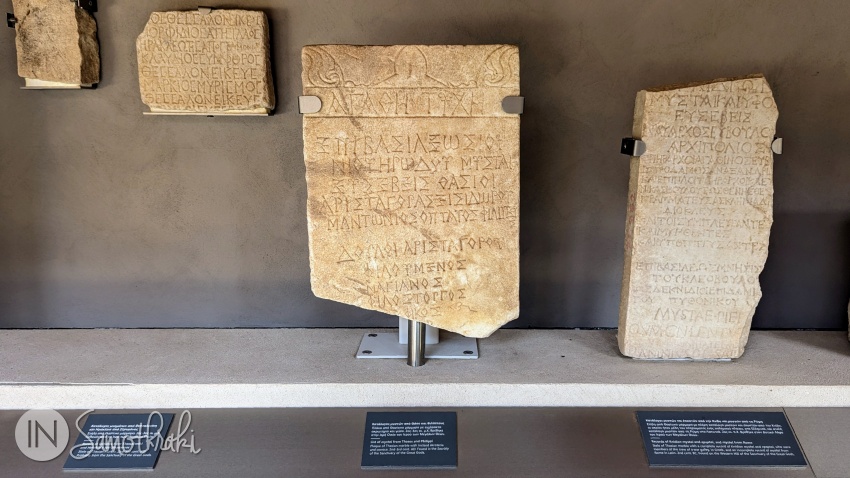
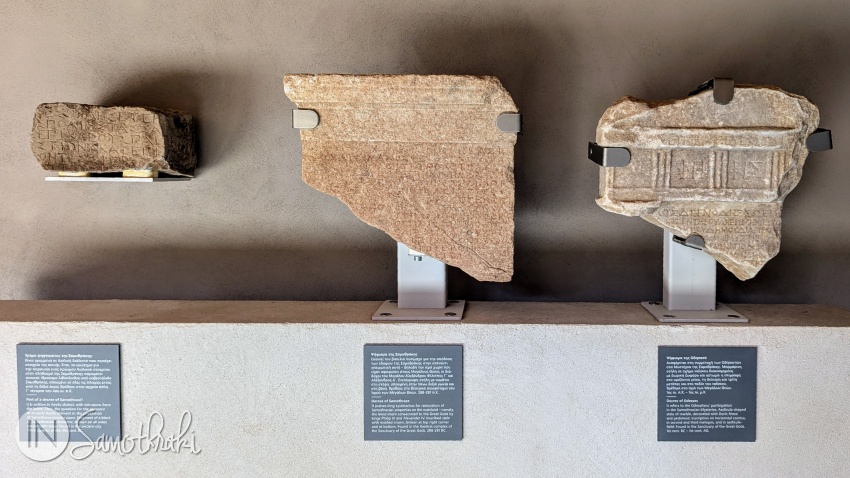
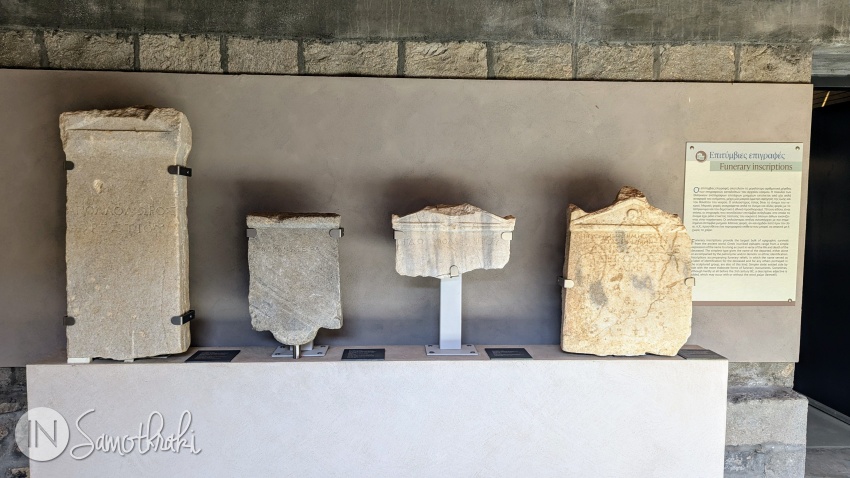
In a small display case, one can see various tools and notebooks of the archeologists who worked on the island.
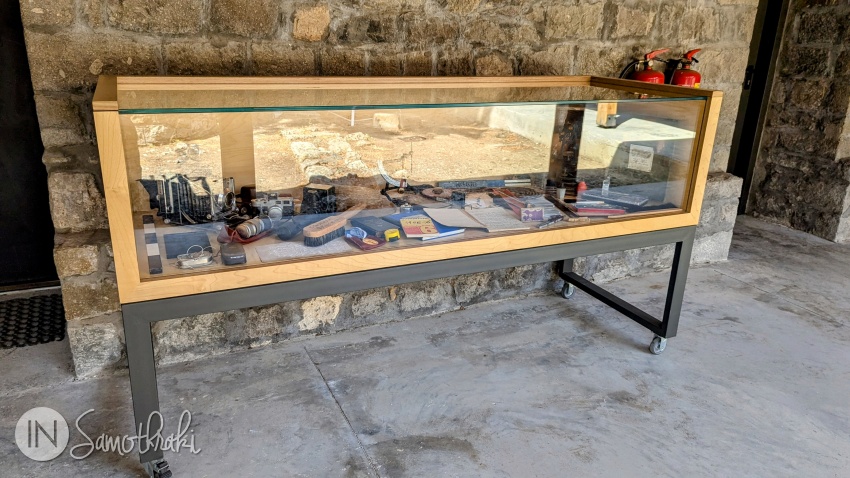
Room D
The room is titled "Initiation and Offerings". It is home to various fragments and offerings from the Dancer's Room, Hieron and from monuments from the central valley of the Sanctuary of the Great Gods.
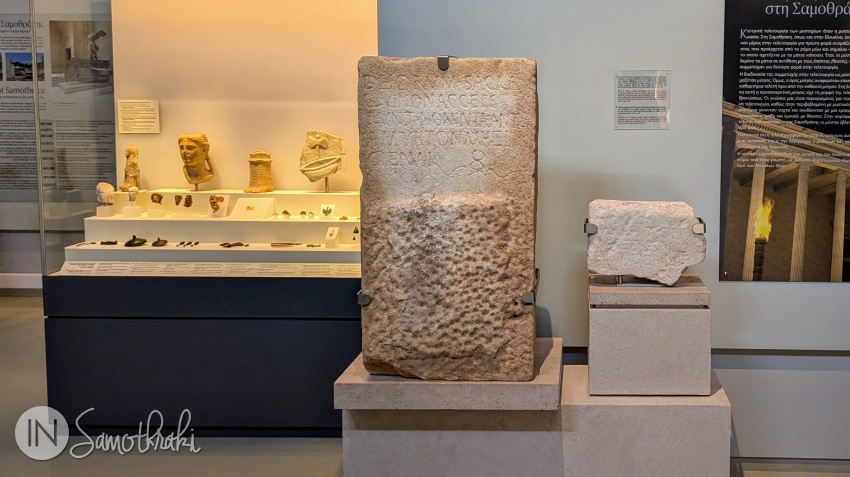
Among them, there are a few pieces from the pedestal that stood at the base of the famous statue of the goddess Niki, on display at the Louvre.
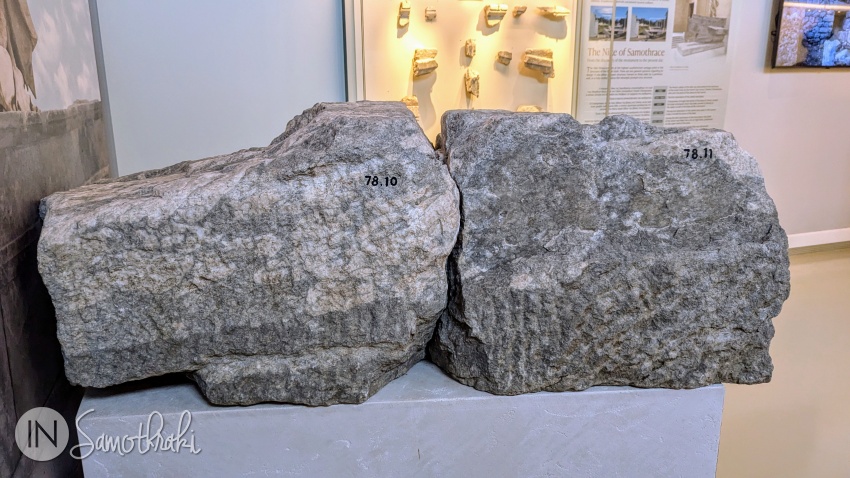
The beautiful marble frieze from the Hall of Choral Dancers, dating back to 340 B.C., is noteworthy. It features several dancing girls and a few playing musical instruments, converging towards the center of the frieze, where the wedding of Kadmos and Armonia was probably depicted.
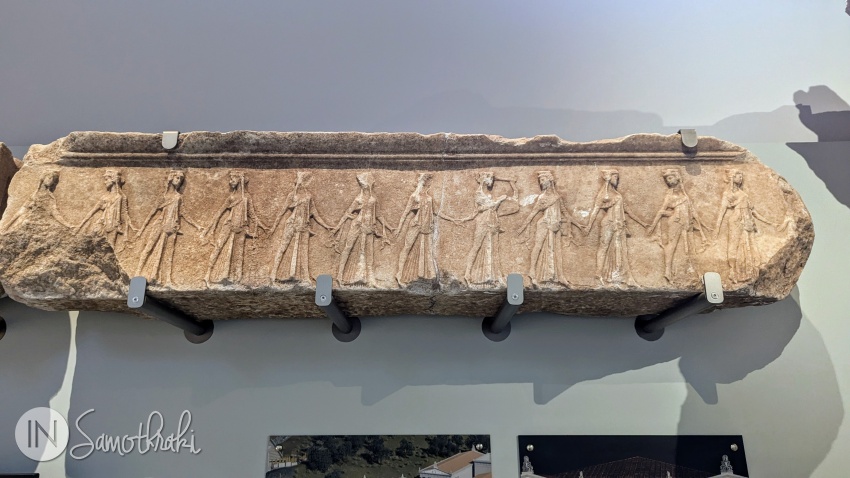
A lion-shaped brooch from the 5th century B.C., made of gold leaf, is in the center of one of the display cases.
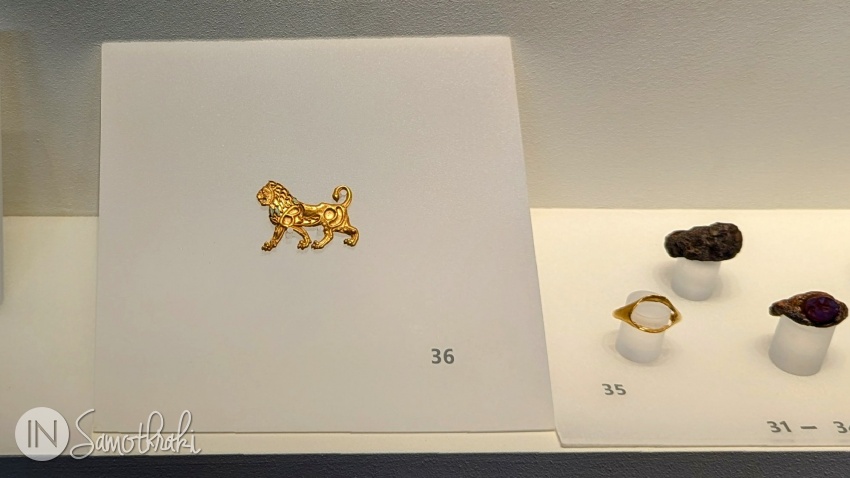
Room E
In Room E, you can see the settlements of Samothraki spanning from prehistory (from 5500 B.C., the Middle Neolithic period) up to the 19th century.
Especially beautiful is the bust of a man, that until 1938 was part of Giannakoudis Terzis's oil mill in Chora. In the present, the building is in ruins. The archeologist Karl Lehmann postulated that the statue was created around 460-450 B.C. and depicts Tiresias, the famous blind prophet. There are traces of more recent modifications when the bust was most likely used to represent a saint.
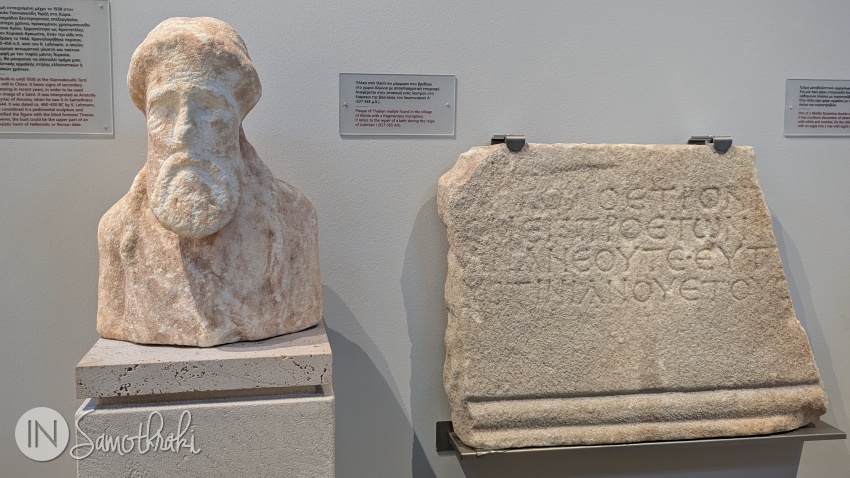


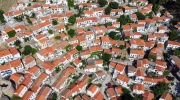 Chora, the perched capital of Samothraki
Chora, the perched capital of Samothraki
 Panagia Krimniotissa, the church on the rock
Panagia Krimniotissa, the church on the rock
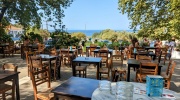 Therma - between the mountain and the sea
Therma - between the mountain and the sea
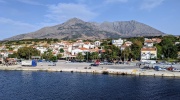 Kamariotissa - Welcome to Samothraki!
Kamariotissa - Welcome to Samothraki!
 The Sanctuary of the Great Gods
The Sanctuary of the Great Gods
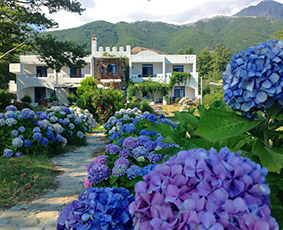
Unfortunately, the museum seems to be in a perpetual state of maintenance and restoration. I hope they will finish it some day.
The museum will open on the 6th of July 2024. Maybe you can make a phone call and ask about Jennifer. Though I think it will be very hard to find about her.
The Sanctuary of the Great Gods is open till 15.30.
It is open from 8.30 to 15.30. There is an entry fee only for the Sanctuary.